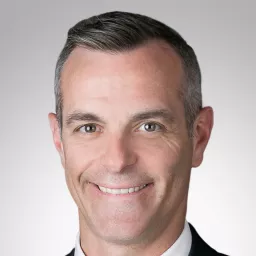Fannie Mae’s green lending program was extremely popular last year, but the business has fallen slightly this year.
Fannie Mae’s green lending program has been extremely popular—and because the business falls outside of Fannie’s lending caps, there is plenty of opportunity. However, this year, the business has fallen over the same time last year. However, the benefits continue to make the program a popular option for borrowers. Aaron Beck, a vice president in
NorthMarq Capital’s San Diego office, recently secured a $17 million refinance loan through the program for a 280-unit apartment property in Las Vegas. Because the long-term non-recourse loan was secured through the green rewards program, the borrower was able to lock in a rate 35 basis points below Fannie Mae’s standard rate. To find out more about the demand for this financing this year, we sat down with Beck for an exclusive interview.
GlobeSt.com: Fannie Mae’s green program was incredibly popular last year. What has activity been like in the first quarter of 2018?
Aaron Beck: Green financing remains very popular; however, business that falls outside of Fannie Mae’s 2018 lending cap of $35 billion—this includes Fannie Mae’s Green Rewards Program—has comprised a slightly smaller portion of their total year-to-date business, as compared to last year. This is largely due to the very attractive spreads that Fannie Mae has been providing for conventional loans in the midst of the current lending environment, which is extremely competitive. Ultimately, I expect the amount of Green financing, as it relates to Fannie Mae’s overall 2018 volume, to return to a level at or near that of 2017.
GlobeSt.com: Have the requirements changed this year, or has the process in obtaining a green loan changed as a result of the high demand?
Beck: The primary change was a regulatory adjustment to the type of Green financing that is exempt from FHFA’s (Federal Housing Finance Agency) lending cap of $35 billion for each Fannie Mae and Freddie Mac. This exemption allows for the reduction in spread, which currently ranges from about 10 to 20 basis points; although, the program allows for a reduction of up to 39 basis points. In order for loans to qualify for the Green Rewards Program in 2018, Borrowers now need to identify and agree to implement Green improvements estimated to save 25% in annual water or energy usage. The previous threshold was 20 percent. This has not caused a material change in the volume of Green loans that are being executed. At the end of the day, it may end up costing a Borrower a few dollars more to meet the 25 percent threshold (vs. 20 percent). For example, if a property would have qualified with only installing faucet aerators and low-flow showerheads in prior years, perhaps the property will now require the additional implementation of something like low-flush toilets. If a loan qualified at the 20 percent threshold, there is generally a path to meeting the 25% threshold at a nominal cost increase. Fannie Mae’s Green Rewards Program does not require Borrowers to spend a minimum per unit dollar amount to satisfy the agreed to Green improvements.
GlobeSt.com: What clients or deal types have been the most interested and active in the green lending program through Fannie Mae, and why?
Beck: It’s been a very broad cross section of clients – from large institutional groups, to regional middle-market owners, to small local operators. The interest rate savings are significant, the program requirements are not onerous, and the added cash flow generated by reduced utility costs is material. As long as a pronounced spread differential exists between conventional and Green loans, Borrowers for nearly every proposed Fannie Mae loan should strongly consider Green financing as an option. The opportunity cost of not considering it far outweighs the minimal cost if the property does not qualify. As for property type, we’ve been successful in securing Green business for a wide range of apartment properties, varying in condition and vintage. Even newer buildings without as much “low-hanging-fruit” have qualified for Green improvements. Because the outlook for energy and water efficiency is constantly shifting, there will continue to be opportunities for Green upgrades.
GlobeSt.com: Are there other green programs that have become competitive with Fannie Mae’s program?
Beck: Yes, Freddie Mac has its own version of Green financing known as “Green Advantage.” This, too, has been extremely popular amongst multi-family Borrowers. The same 25 percent estimated savings threshold per year for energy or water that applies to Fannie Mae’s program applies to Freddie Mac’s program. Each program allows for significant interest rate savings at very little cost to Borrowers.
GlobeSt.com: You recently secured funding through the program for a 280-unit apartment property in Las Vegas. Why was the green program a good fit in this instance, and what was the process like to secure funding?
Beck: The property was built 20 years ago. While the Borrower has done an excellent job of completing upgrades for energy and water efficiency, we soon recognized there were additional improvements that could be completed to meet the minimum water savings threshold. In this instance, the Borrower agreed to install low-flow faucets and showerheads, and make some improvements to irrigation within the first twelve months of the loan term. The estimated total cost for these Green improvements was less than $60,000 ($215 per unit). In turn, the spread was reduced by more than 35 basis points. The total loan interest and water usage savings to the Borrower over the term of the loan is estimated at nearly $500,000. Aside from completing an additional report for water and energy efficiency (cost of the report was reimbursed to the Borrower at closing) and agreeing to make the Green improvements, the process for securing the Green loan was no different than a conventional execution.
